Subtitle "Afrikaans" was produced by machine.Subtitle "አማርኛ" was produced by machine.Subtitle "العربية " was produced by machine.Subtitle "Ārāmāyâ" was produced by machine.Subtitle "azərbaycan dili " was produced by machine.Subtitle "беларуская мова " was produced by machine.Подзаглавието "България" е създадено от машина.সাবটাইটেল "বাংলা " মেশিন দ্বারা তৈরি করা হয়েছিল।Subtitle "བོད་ཡིག" was produced by machine.Subtitle "босански" was produced by machine.Subtitle "català" was produced by machine.Subtitle "Cebuano" was produced by machine.Subtitle "ગુજરાતી" was produced by machine.Subtitle "corsu" was produced by machine.Podtitul "Čeština" byl vytvořen automaticky.Subtitle "Cymraeg" was produced by machine.Subtitle "Dansk" was produced by machine.Untertitel "Deutsch" wurde maschinell erzeugt.Subtitle "Untertitel" was produced by machine.Ο υπότιτλος "Ελληνικά" δημιουργήθηκε αυτόματα.Subtitle "English" was produced by machine.Subtitle "Esperanto" was produced by machine.El subtítulo "Español" se generó automáticamente.Subtitle "Eesti" was produced by machine.Subtitle "euskara" was produced by machine.Subtitle "فارسی" was produced by machine.Subtitle "Suomi" was produced by machine.Le sous-titrage "Français" a été généré automatiquement.Subtitle "Frysk" was produced by machine.Subtitle "Gaeilge" was produced by machine.Subtitle "Gàidhlig" was produced by machine.Subtitle "Galego" was produced by machine.Subtitle "Schwizerdütsch" was produced by machine.Subtitle "هَوُسَ" was produced by machine.Subtitle "Ōlelo Hawaiʻi" was produced by machine.Subtitle "עברית" was produced by machine.Subtitle "हिन्दी" was produced by machine.Subtitle "Mẹo" was produced by machine.Subtitle "Hrvatski" was produced by machine.Subtitle "Kreyòl ayisyen " was produced by machine.Subtitle "Magyar" was produced by machine.Subtitle "Հայերեն" was produced by machine.Subtitle "Bahasa Indonesia " was produced by machine.Subtitle "Asụsụ Igbo " was produced by machine.Textun"Íslenska" var framkvæmt vélrænt.Sottotitoli "Italiano" sono stati generati automaticamente.字幕は"日本語" 自動的に生成されました。Subtitle "Basa Jawa" was produced by machine.Subtitle "ქართული" was produced by machine.Subtitle "қазақ тілі " was produced by machine.Subtitle "ភាសាខ្មែរ" was produced by machine.Subtitle "ಕನ್ನಡ" was produced by machine.Subtitle "한국어" was produced by machine.Subtitle "कोंकणी語" was produced by machine.Subtitle "کوردی" was produced by machine.Subtitle "Кыргызча" was produced by machine.Subtitle " lingua latina" was produced by machine.Subtitle "Lëtzebuergesch" was produced by machine.Subtitle "Lingala" was produced by machine.Subtitle "ພາສາ" was produced by machine.Subtitle "Lietuvių" was produced by machine.Subtitle "Latviešu" was produced by machine.Subtitle "fiteny malagasy" was produced by machine.Subtitle "te reo Māori" was produced by machine.Subtitle "македонски јазик" was produced by machine.Subtitle "malayāḷaṁ" was produced by machine.Subtitle "Монгол хэл" was produced by machine.Subtitle "मराठी" was produced by machine.Subtitle "Bahasa Malaysia" was produced by machine.Subtitle "Malti" was produced by machine.Subtitle "မြန်မာစာ " was produced by machine.Subtitle "नेपाली" was produced by machine.Ondertitels "Nederlands" machinaal geproduceerd.Subtitle "Norsk" was produced by machine.Subtitle "chiCheŵa" was produced by machine.Subtitle "ਪੰਜਾਬੀ" was produced by machine.Podtytuł "Polska" został utworzony przez maszynę.Subtitle "پښتو" was produced by machine.Legenda "Português" foi gerada automaticamente.Subtitle "Română" was produced by machine.Subtitle "Язык жестов (Русский)" was produced by machine.Субтитры "Pусский" были созданы машиной.Subtitle "Kinyarwanda" was produced by machine.Subtitle "सिन्धी" was produced by machine.Subtitle "Deutschschweizer Gebärdensprache" was produced by machine.Subtitle "සිංහල" was produced by machine.Subtitle "Slovensky" was produced by machine.Subtitle "Slovenski" was produced by machine.Subtitle "gagana fa'a Samoa" was produced by machine.Subtitle "chiShona" was produced by machine.Subtitle "Soomaaliga" was produced by machine.Titra "Shqip" u krijua automatikisht.Subtitle "србски" was produced by machine.Subtitle "Sesotho" was produced by machine.Subtitle "Basa Sunda" was produced by machine.Undertext "Svenska" är maskinell skapad.Subtitle "Kiswahili" was produced by machine.Subtitle "தமிழ்" was produced by machine.Subtitle "తెలుగు" was produced by machine.Subtitle "Тоҷикй" was produced by machine.Subtitle "ภาษาไทย" was produced by machine.ንኡስ ኣርእስቲ "ትግርኛ" ብማሽን እዩ ተፈሪዩ።Subtitle "Türkmençe" was produced by machine.Subtitle "Tagalog" ay nabuo sa pamamagitan ng makina.Altyazı "Türkçe" otomatik olarak oluşturuldu.Subtitle "татар теле" was produced by machine.Subtitle "Українська " was produced by machine.ذیلی عنوان "اردو" مشین کے ذریعہ تیار کیا گیا تھا۔Subtitle "Oʻzbek" was produced by machine.Phụ đề được tạo bởi máy.Subtitle "Serbšćina" was produced by machine.Subtitle "isiXhosa" was produced by machine.Subtitle "ייִדיש" was produced by machine.Subtitle "Yorùbá" was produced by machine.Subtitle "中文" was produced by machine.Subtitle "isiZulu" was produced by machine.
kla.TV accepts no liability for defective translation.kla.TV accepts no liability for defective translation.kla.TV accepts no liability for defective translation.kla.TV accepts no liability for defective translation.kla.TV accepts no liability for defective translation.kla.TV accepts no liability for defective translation.kla.TV не носи отговорност за некачествен превод.অপর্যাপ্ত অনুবাদের জন্য kla.TV কোন দায় বহন করে না।kla.TV accepts no liability for defective translation.kla.TV accepts no liability for defective translation.kla.TV accepts no liability for defective translation.kla.TV accepts no liability for defective translation.kla.TV accepts no liability for defective translation.kla.TV accepts no liability for defective translation.kla.TV nenese žádnou odpovědnost za chybné překlady.kla.TV accepts no liability for defective translation.kla.TV accepts no liability for defective translation.kla.TV übernimmt keine Haftung für mangelhafte Übersetzung.kla.TV accepts no liability for inadequate translationΗ kla.TV δεν φέρει καμία ευθύνη για ανεπαρκή μετάφραση.kla.TV accepts no liability for defective translation.kla.TV accepts no liability for defective translation.kla.TV no se hace responsable de traducciones incorrectas.kla.TV accepts no liability for defective translation.kla.TV accepts no liability for defective translation.kla.TV accepts no liability for defective translation.kla.TV accepts no liability for defective translation.kla.TV n'assume aucune responsabilité en cas de mauvaise traduction.kla.TV accepts no liability for defective translation.kla.TV accepts no liability for defective translation.kla.TV accepts no liability for defective translation.kla.TV accepts no liability for defective translation.kla.TV accepts no liability for defective translation.kla.TV accepts no liability for defective translation.kla.TV accepts no liability for defective translation.kla.TV accepts no liability for defective translation.kla.TV accepts no liability for defective translation.kla.TV accepts no liability for defective translation.kla.TV accepts no liability for defective translation.kla.TV accepts no liability for defective translation.kla.TV nem vállal felelősséget a hibás fordításértkla.TV accepts no liability for defective translation.kla.TV accepts no liability for defective translation.kla.TV accepts no liability for defective translation.kla.TV tekur enga ábyrgð á áræðanleika þýðingarinnarKla.TV non si assume alcuna responsabilità per traduzioni lacunose e/o errate.Kla.TV は、不適切な翻訳に対して一切の責任を負いません。kla.TV accepts no liability for defective translation.kla.TV accepts no liability for defective translation.kla.TV accepts no liability for defective translation.kla.TV accepts no liability for defective translation.kla.TV accepts no liability for defective translation.kla.TV accepts no liability for defective translation.kla.TV accepts no liability for defective translation.kla.TV accepts no liability for defective translation.kla.TV accepts no liability for defective translation.kla.TV accepts no liability for defective translation.kla.TV accepts no liability for defective translation.kla.TV accepts no liability for defective translation.kla.TV accepts no liability for defective translation.kla.TV accepts no liability for defective translation.kla.TV accepts no liability for defective translation.kla.TV accepts no liability for defective translation.kla.TV accepts no liability for defective translation.kla.TV accepts no liability for defective translation.kla.TV accepts no liability for defective translation.kla.TV accepts no liability for defective translation.kla.TV accepts no liability for defective translation.kla.TV accepts no liability for defective translation.kla.TV accepts no liability for defective translation.kla.TV accepts no liability for defective translation.kla.TV accepts no liability for defective translation.kla.TV aanvaardt geen aansprakelijkheid voor foutieve vertalingen.kla.TV accepts no liability for defective translation.kla.TV accepts no liability for defective translation.kla.TV accepts no liability for defective translation.kla.TV nie ponosi odpowiedzialności za wadliwe tłumaczenie.kla.TV accepts no liability for defective translation.kla.TV não se responsabiliza por traduções defeituosas.kla.TV accepts no liability for defective translation.kla.TV accepts no liability for defective translation.kla.TV не несет ответственности за некачественный перевод.kla.TV accepts no liability for defective translation.kla.TV accepts no liability for defective translation.kla.TV accepts no liability for defective translation.kla.TV accepts no liability for defective translation.kla.TV accepts no liability for defective translation.kla.TV accepts no liability for defective translation.kla.TV accepts no liability for defective translation.kla.TV accepts no liability for defective translation.kla.TV accepts no liability for defective translation.kla.TV nuk mban asnjë përgjegjësi për përkthime joadekuate.kla.TV accepts no liability for defective translation.kla.TV accepts no liability for defective translation.kla.TV accepts no liability for defective translation.Kla.TV tar inget ansvar för felaktiga översättningar.kla.TV accepts no liability for defective translation.kla.TV accepts no liability for defective translation.kla.TV accepts no liability for defective translation.kla.TV accepts no liability for defective translation.kla.TV accepts no liability for defective translation.kla.TV ንዝኾነ ጉድለት ትርጉም ዝኾነ ይኹን ሓላፍነት ኣይቅበልን እዩ።kla.TV accepts no liability for defective translation.kla. Walang pananagutan ang TV sa mga depektibong pagsasalin.kla.TV hatalı çeviriler için hiçbir sorumluluk kabul etmez.kla.TV accepts no liability for defective translation.kla.TV accepts no liability for defective translation.kla.TV عیب دار ترجمہ کے لیے کوئی ذمہ داری قبول نہیں کرتا ہے۔kla.TV accepts no liability for defective translation.Kla. TV không chịu trách nhiệm về bản dịch không đầy đủ.kla.TV accepts no liability for defective translation.kla.TV accepts no liability for defective translation.kla.TV accepts no liability for defective translation.kla.TV accepts no liability for defective translation.kla.TV accepts no liability for defective translation.kla.TV accepts no liability for defective translation.
This is a modal window.
The media could not be loaded, either because the server or network failed or because the format is not supported.
WHO: Lessons from History
27.05.2024
www.kla.tv/29147
The World Health Assembly is convening in Geneva for the 77th time today (27th May 2024). How many of the State representatives present are aware that the WHO has a long and scandalous history of doing the bidding for reckless pharmaceutical giants? Who will hold the WHO accountable for its advice to push poorly tested and even lethal drugs down nations throats? We will remind of this till justice is served. This article was researched and written by VeryOfficialNews.substack.com, find all sources below.
[continue reading]
WHO: Lessons from History
Download broadcast and attachments in the wanted quality: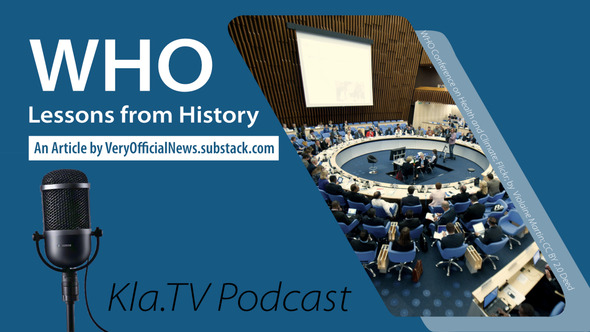

|
Authors Recommendation: https://www.veryofficialnews.substack.com/p/the-root-cure
Watch more videos on the subject:
|
|---|
Hashtags: #WHO-en
Useage rights:
Standard-Kla.TV-Licence
Topics A-Z
Enter a word for search or use the alphabetic search-order

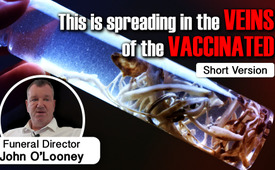
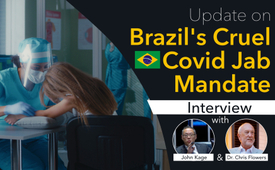
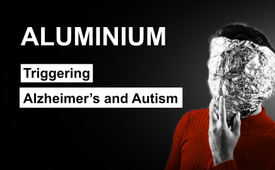
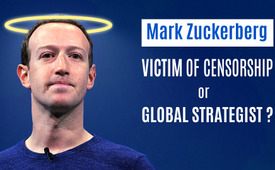
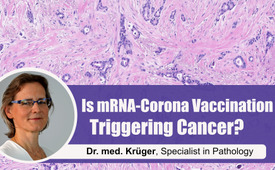
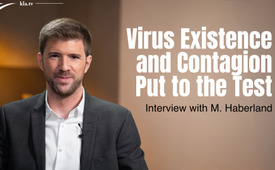
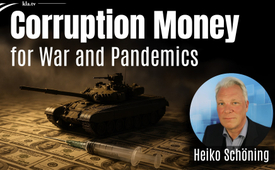

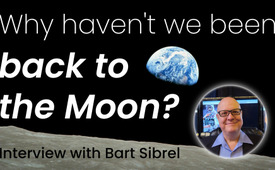
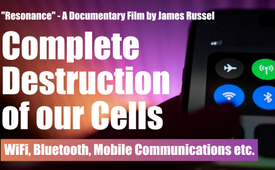
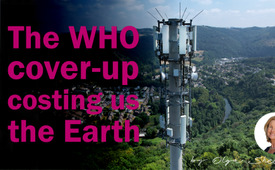
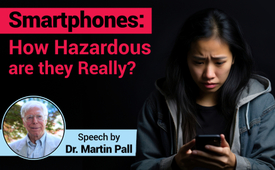
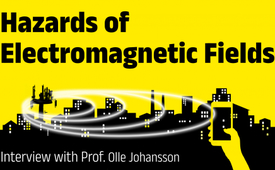
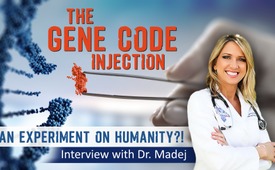
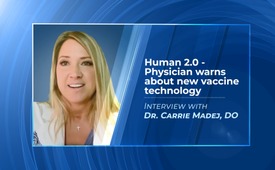
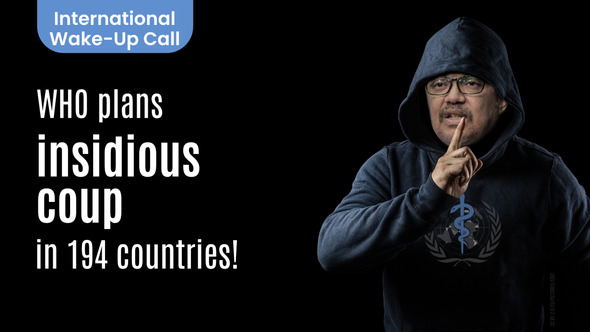


Sendungstext
herunterladen
27.05.2024 | www.kla.tv/29147
By the end of the reign of WHO Director-General Hiroshi Nakajima, he had been criticized for, quote, “autocratic style and poor management, his inability to communicate effectively, and, worst of all, cronyism and corruption” (Brown et al., 2006) and voluntary or “extrabudgetary” funds had already outpaced “assessed contributions” for the organization. Assessed contributions are funds submitted on the basis of a country’s wealth, its GNP and population, and are funds which the WHO assembly holds authority over. By contrast, voluntary or “extrabudgetary” contributions must be used as directed by the contributors, eff ectively selling out the WHO’s priorities to the highest bidder. I.e. quote, “Wealthy donor nations and multilateral agencies like the World Bank could largely call the shots on the use of the extrabudgetary funds they contributed” (Brown et al., 2006), causing “a great deal of dependence on the satisfaction of particular donors.” (Walt, 1993) Nakajima was replaced by Gro Harlem Brundtland. Brundtland had been well-placed as chairperson of the World Commission on Environment and Development at the time of the 1992 UN Conference on the Environment and Development (“Earth Summit”) in Rio de Janeiro, which saw the adoption of the UN’s Agenda 21, later updated and broadened to Agenda 2030 and its Sustainable Development Goals, as well as the United Nations Framework Convention on Climate Change or UNFCCC, later famously extended with the Kyoto Protocol and Paris Agreement. The conference is credited as kicking off the trend of overt coziness between the UN and big business According to the Third World Network, “In 1998, Brundtland, newly elected as Director-General of WHO, told member states that one of the hallmarks of her term would also be increased cooperation with the private sector under the name of public-private partnerships.” As detailed in “The World Health Organization and the Transition From “International” to “Global” Public Health” by Brown et al., [Brundtland] began to strengthen WHO’s financial position, largely by organizing “global partnerships” and “global funds” to bring together “stakeholders”—private donors, governments, and bilateral and multilateral agencies—to concentrate on specific targets… These were semiautonomous programs bringing in substantial outside funding, often in the form of “public–private partnerships.” In 1999, Brundtland’s WHO drew up a document titled “Influenza Pandemic Plan: The Role of WHO and Guidelines for National and Regional Planning.” The British Medical Journal smelled a rat. revealing that, “In the small print of that document it states: “R Snacken, J Wood, L R Haaheim, A P Kendal, G J Ligthart, and D Lavanchy prepared this document for the World Health Organization (WHO), in collaboration with the European Scientific Working Group on Influenza (ESWI).” What this document does not disclose is that ESWI is funded entirely by Roche and other influenza drug manufacturers. Nor does it disclose that René Snacken and Daniel Lavanchy were participating in Roche sponsored events the previous year, according to marketing material seen by the BMJ/The Bureau.” The BMJ went on to identify several additional members of the European Scientific Working Group on Influenza in Roche’s marketing materials. That same year, the FDA would be offered new antivirals for pandemic preparedness called neuraminidase inhibitors by both Roche and the company that is now GlaxoSmithKline. When Dr. Elashoff, the statistician assigned to review both drugs, determined first that Glaxo’s drug lacked efficacy, and the FDA panel rejected the drug, the FDA overruled its panel and approved it. It then reassigned Roche’s drug to someone else, approving it shortly thereafter. (Cohen & Carter, 2010) In 2002, the WHO held a meeting of influenza experts for the use of vaccines and antivirals during an influenza pandemic. In 2004, the organization published a report from that meeting, “WHO Guidelines on the Use of Vaccines and Antivirals during Influenza Pandemics”, which had three annexes, all written by authors with relevant conflicts of interest that were not provided by the WHO. That the organization did not publicly disclose any of these conflicts of interest is particularly disturbing because governments around the world were advised based on the guidelines, which recommended stockpiling the drugs. In short order, 10 billion dollars were spent on Roche’s Tamiflu, and roughly 2 billion on GSK’s Relenza. The BMJ asked the WHO directly for the Declaration of Interest statements provided by participants, but was denied. Dr. Arnold Monto, exposed to have been paid by both Roche and GSK, was the lone author on the annex on pandemic vaccination, and was cited as substantiating the efficacy of neuraminidase inhibitors in the annex on antivirals despite that, per the BMJ’s expose, findings of such ostensible efficacy were profoundly difficult to replicate elsewhere. In fact, in a later collaboration with the highly respected Cochrane Review, the BMJ would leave such claims handily discredited, much to the embarrassment of the WHO, which had already placed Tamiflu on its list of “essential medicines”. (Kelland, 2010) Dr. Monto would later become fairly well-known to Americans tuning in to the FDA’s VRBPAC meetings in the COVID era, as a result of the fact that, in addition to being a voting panelist, he was the one who led them. From the perspective of the biopharmaceutical industry that underwrites three quarters of the FDA’s review budget (Chen, 2018), Monto did not disappoint. For example, on June 28, 2022 when Dr. Ofer Levy asked Pfizer’s science VP whether her meager eight-mouse antibody data (Mole, 2022) had any correlates of protection, Monto was there to rush the answer, appearing completely undeterred by her admission that there were “no correlates of protection”. (U.S. Food and Drug Administration, 2022) He then falsely proclaimed to the panel “we have to pick one” of the shot formulations, implying that no paucity of data would lead him to rejection (U.S. Food and Drug Administration, 2022). The apparent preordination was so shameful that one of the FDA’s most avidly pro-vaccine panelists ceded in a subsequent interview that he felt “the fix was in.” (ZDoggMD, 2022) Returning to the chronicle, 2005 was a landmark year in the pandemic preparedness sequence. There was the Avian flu scare, for which Dr. David Nabarro, one of the most senior and prominent public health experts at the World Health Organization, told the BBC that the "range of deaths could be anything between five and 150 million.” (Sturcke, 2005) Of course, nothing remotely close to those figures occurred, nor was it ever reasonably inferable. Ontario's former chief medical officer went so far as to decry the rhetoric as “fraud”. (Andresen, 2006) This did not stop the Bush administration from vying to spend 7 billion dollars (Tucker, 2020) on the panic, nor Donald Rumsfeld from making a “killing” (Lean & Owen, 2006) from Tamiflu profits allotted to Gilead sciences, which had developed the drug for Roche. Rumsfeld had been on the board of Gilead before joining the Bush administration, a company that became better known in the COVID era for developing remdesivir, a drug which was recommended for COVID treatment in the United States by a panel with 9 members receiving financial support from the company (NIH, 2023) following a last-minute change in the primary endpoint of its NIAID trial, detailed in the Washington Post. “I think that they thought they weren’t going to win, and they wanted to change it to something they could win on,'' said Steven Nissen, a Cleveland Clinic cardiologist and expert clinical investigator who has led numerous drug trials. …Gilead did not respond to a question about whether it had input on the decision to change the endpoint. The obscenely lucrative drug (Maybarduk, 2020), notable for its tendency to precipitate kidney failure (Gérard et al., 2021), took on preeminent status in federal recommendations (NIH, 2023), becoming widely used in hospitals across the US (McCarver, 2021), which, perhaps not entirely coincidentally, had the highest death rate in the developed world (including in 2020, before things like varying vaccination rates could have been fingered for the discrepancy). (Cortez, 2020) Later studies suggested the drug actually increased the length of hospital stays rather than reducing them. (McCarver, 2021) Most crucially, 2005 was the year the World Health Organization came out with its updated version of the International Health Regulations. The WHO had drafted the original International Health Regulations (IHR) in 1969, which themselves represented a “revised and consolidated version of the previous International Sanitary Regulations.” (PAHO) The 2005 revision was designed to comparatively increase the legislative and constitutional power of the WHO. Among other things, the 2005 IHR empowered the WHO Director-General to declare Public Health Emergencies of International concern, or PHEICs. The 2005 International Health Regulations officially went into force in the summer 2007, in near-simultaneity with the establishment of advanced supply contracts for pandemic-specific vaccines with drugmakers, referred to in British parliament as “sleeping contracts”. (Hansard, 2007) The WHO was almost ready to declare its first Public Health Emergency of International concern.
from ---
https://www.ncbi.nlm.nih.gov/pmc/articles/PMC1470434/
https://pubmed.ncbi.nlm.nih.gov/10126754/
https://sdgs.un.org/goals
https://en.wikipedia.org/wiki/United_Nations_Framework_Convention_on_Climate_Change
https://www.twn.my/title2/resurgence/2015/298-299/cover02.htm
https://www.corpwatch.org/article/greenwash-10#rio
https://www.bmj.com/content/bmj/340/7759/Feature.full.pdf
https://iris.who.int/bitstream/handle/10665/70631/WHO_CDS_CSR_RMD_2004.8_eng.pdf?sequence=1&isAllowed=y
https://www.reuters.com/article/us-roche-hldg-tamiflu/researchers-regulators-and-roche-row-over-stockpiled-drug-tamiflu-idUSBREA3824K20140409/
https://www.propublica.org/article/fda-repays-industry-by-rushing-risky-drugs-to-market#:~:text=As%20pharma%20companies%20underwrite%20three,effects%20and%20unproven%20health%20benefits.
https://arstechnica.com/science/2022/08/with-data-in-mice-pfizer-asks-fda-to-authorize-its-fall-ba-4-5-booster-shot/
https://www.youtube.com/watch?v=BFdzNUus_CE&t=11104s
https://www.youtube.com/watch?v=BFdzNUus_CE&t=14014s
https://www.youtube.com/watch?v=PLo2Wwa3NNA
https://www.theguardian.com/world/2005/sep/30/birdflu.jamessturcke
https://www.ncbi.nlm.nih.gov/pmc/articles/PMC1534081/
https://www.aier.org/article/a-retrospective-on-the-avian-flu-scare-of-2005/
https://www.independent.co.uk/news/world/americas/donald-rumsfeld-makes-5m-killing-on-bird-flu-drug-6106843.html?r=14042
https://www.covid19treatmentguidelines.nih.gov/about-the-guidelines/panel-financial-disclosure/
https://www.washingtonpost.com/business/2020/05/01/government-researchers-changed-metric-measure-coronavirus-drug-remdesivir-during-clinical-trial/
https://www.citizen.org/news/gileads-remdesivir-price-is-offensive/
https://pubmed.ncbi.nlm.nih.gov/33340409/
https://www.covid19treatmentguidelines.nih.gov/therapies/antivirals-including-antibody-products/remdesivir/
https://medicine.uiowa.edu/content/research-shows-remdesivir-treatment-covid-19-has-little-impact-survival-increases-hospital
https://www.hmpgloballearningnetwork.com/site/emsworld/news/1225033/us-has-highest-covid-19-death-rate-developed-world
https://www.paho.org/en/documents/international-health-regulations-1969
https://hansard.parliament.uk/commons/2007-10-09/debates/0710106000132/VaccinesSleepingContracts